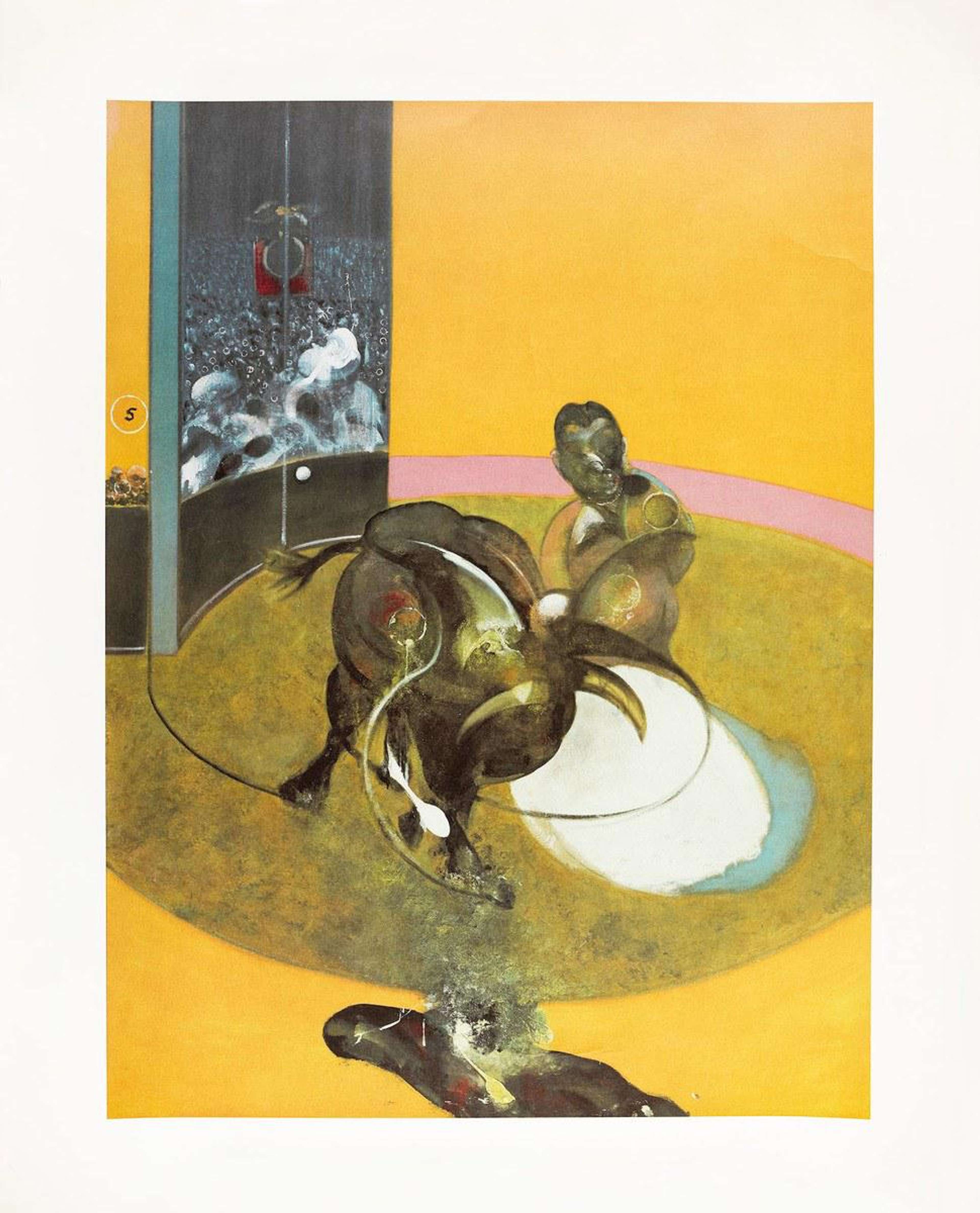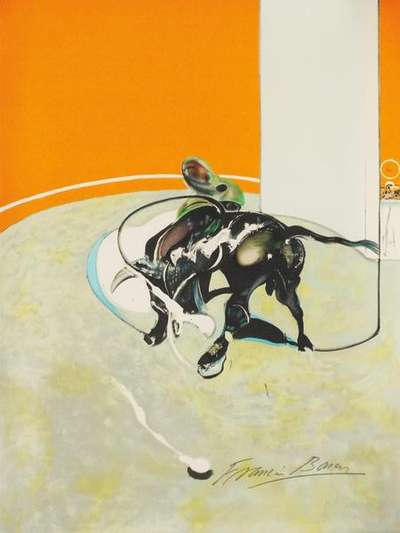
Study For Bullfight No. 2

Study For Bullfight No. 2
Signed Print
Francis Bacon
Price data unavailable
AAGR (5 years) This estimate blends recent public auction records with our own private sale data and network demand.
There aren't enough data points on this work for a comprehensive result. Please speak to a specialist by making an enquiry.
Medium: Lithograph
Edition size: 150
Year: 1990
Size: H 85cm x W 65cm
Signed: Yes
Format: Signed Print
TradingFloor
Track this artwork in realtime
Watch artwork, manage valuations, track your portfolio and return against your collection
Track auction value trend
Auction Results
| Auction Date | Auction House | Location | Hammer Price | Return to Seller | Buyer Paid |
|---|---|---|---|---|---|
| October 2018 | Doyle Auctioneers & Appraisers | United States |
Meaning & Analysis
Study For Bullfight (left panel) is part of an infamous trio of bullfight studies by Francis Bacon finished in 1990. Each panel depicts an ominous bull with monstrous horns charging at a matador in the centre of the sandy bullring. Surrounded by a fiery yellow interior, the bull and matador are rendered in bruise-like tones that unite them in their physical endeavour.
A murky sandy ring contains the action within the scene. A thin pink band hugs the upper half of the enclosure, and the mirror on the left side of the ring provides a glimpse of the roaring audience. The chaos emitted from this section reflects the animosity of humans- a theme which Bacon explored in much of his work - as they look upon the ‘dance’ between life and death of the beast and the man.
This lithograph is part of an edition size of 150. In it the action extends beyond the ring as a trail of the bull’s movements is trailed outside the ring and into the sand. Black dashes swirl around the bull and matador suggesting the circular movements of the figures. An atmosphere of chaos and commotion is emitted as a black tail is seen to swish and hoofs can almost be heard clattering around in this grandiose spectacle of danger.
Irish-born artist, Francis Bacon, has produced some of the most famous paintings in the British Contemporary canon. The 20th century maverick's visceral and emotionally charged canvases redefined figurative art. Exploring harrowing themes of trauma, sexuality, religion and violence, Bacon forces the viewer to confront the human psyche and the dark realities of human emotion. Often working from memory or his own imagination, there is a clear morphing of influences on Bacon’s work. An unusual combination of imagery is the result of his exposure to canonical artists such as Velazquez, Picasso and Rembrandt alongside his exploration of medical textbooks and photographic stills.


